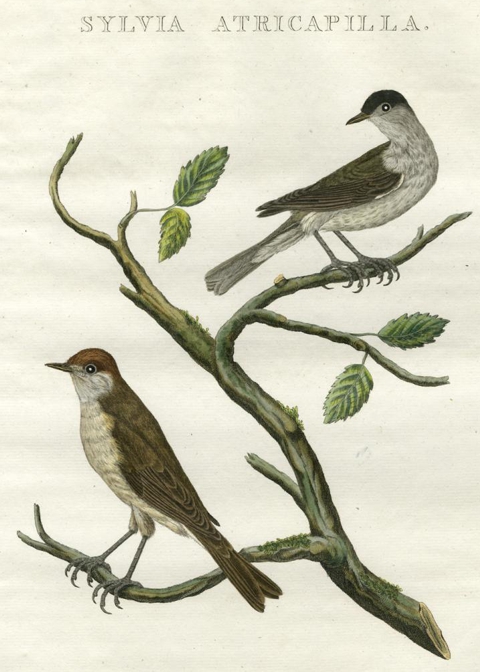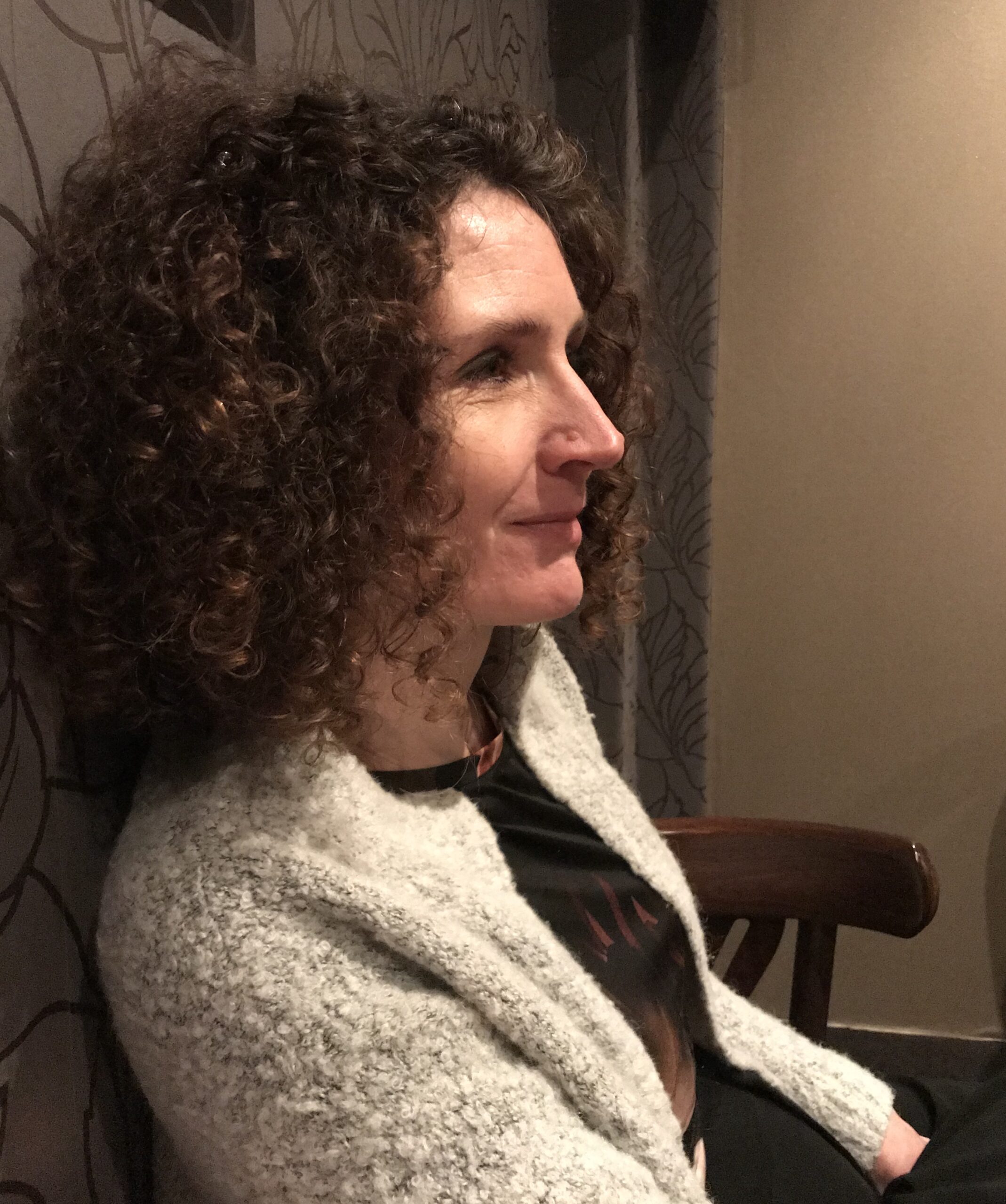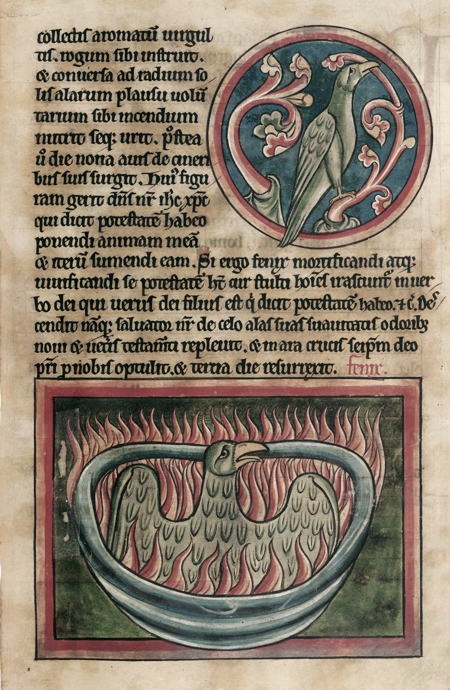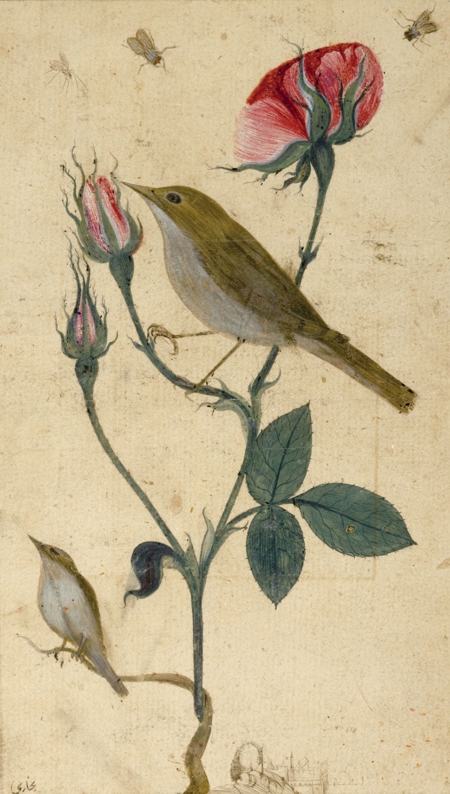Erato | Liner notes
[5] Erato / Acem-Bûselik medhal
• Muse (m/f/x)
[6] Muhayyer taksim / Improvisation on the kanun
[7] Sapor / Muhayyer peşrev
[8] Manastırka / Poustséno / Pušteno
• Original track notes (2019)
[9] Phoenix / Kürdî devr-i hindî
[10] Şivenüma taksim / Improvisation on the violin
[11] Erebos / Şivenüma peşrev
[12] The Rose and the Nightingale / Phrygian phantasy
[13] Romanza / Acem Aşîrân saz semâî
[14] Aj Sarajevo / Nihâvend yürük semâî / Bojerka
Other releases by Kairos Collective
Contact us
Introduction
Where does this music come from?
While the world we live in seems to have run out of virgin territory, I am lucky and perhaps escapist enough to enjoy access to worlds that still need discoverers: the lost ones I visit as a geologist, and music, which I consider a world entirely of its own. This album, my third, is dedicated to the source of music, an idea that was triggered by a thought-provoking seminar given by master musician and composer Ross Daly (1952) entitled ‘Where does this music come from?’ This question could of course be, and usually is, a simple enquiry about the geographic origin of an unknown piece of traditional music. It can however also be a deeper, more challenging one, expecially for composers. Music seems to originate from your mind, and with the right skills and mindset you can make it come out. But how did it get inside your head in the first place? Why does it come out the way it does? How do you decide that a piece is finished? Why does it sometimes feel like pieces are writing themselves and that you are merely there to assist? Neuroscience, sociology, geography and history may give us some clues, but I prefer to think that these questions have no meaningful, complete answers and maintain my sense of wonder when approaching them.
What is music anyway?
To me there is something special about music as an artform that I would like to discuss before diving into its source. I’d say that art in general is something that people make or do with an aesthetic value that is high enough to trigger sensations and emotions beyond the ordinary. You experience art with your basic senses—sight, hearing, taste, smell, touch—and through those, art plays with your sense of time, direction, order, logic, security, right and wrong, love and belonging, and so on. Art needs to be unsettling in order to move.
Most of the photographs, films, plays, paintings and sculptures that we see, literature we read, or the food that we taste are samples, approximations, descriptions, mimicries, interpretations, variations, fantasies or even hallucinations of the world as we experience it. Nonetheless, it appears difficult for us to actually escape from reality. Even when moving towards and into abstract or supernatural realms, we tend to create alternative realities that are not all that different from our own world.
Music is an orchestrated release of acoustic energy with the intent to generate an aesthetic experience
Music, however, does not seem to use the world as a source in the same way. Even though some of our environments produce beautiful sounds, we want music to be more than that: less random, better structured, more balanced. In fact, the more accurately music tries to imitate the world, the more likely it will not be considered to be music. Music is abstract by nature. It can approach reality, but from a distance and with caution. This obviously does not apply to the lyrics that music may have.
What about lyrics?
No matter how abstract or symbolic the lyrics of a song may be, words carry more meaning than notes and tones. Having said that, I wonder how many people actually listen to lyrics closely. It is often quite difficult, as intelligibility may to a varying degree be sacrificed for a particular musical aesthetic. Try to make out the lyrics in grunted death metal, in exalted opera singing (librettos are handed out for a reason) or think of the way syllables are protracted and embellished beyond easy recognition in Eastern styles. Of course, there are genres in which singing is optimised for intelligibility, such as French chanson, German schlager, Finnish shouting, rap, gospel, or performances of singer-songwriters like Bob Dylan. Notwithstanding the overall artistic value these styles may carry for you, the highest honour Dylan received was for poetry, which he happened to sing.
Even when words can be identified, the older the lyrics, the more alien and incomprehensible they will be, also for native or proficient speakers of the language at hand. Then again, understanding the lyrics doesn’t seem to be a prerequisite for enjoying music. Which non-anglophone child hasn’t sung English pop songs and realised later in life that the lyrics actually mean something? When I am listening to music myself, the general meaning of the lyrics adds atmosphere and context, and the voice emotion and texture to the sound. Actually focussing on the lyrics is something that I mostly do outside the musical experience. I think most people like singing because the human voice is the instrument they can best relate to.
Erato
Getting back to the questions I started out with: music comes from people, which makes music worldly after all, even though it doesn’t imitate the world, and I consider our ability to conceive, produce and experience it in such endless varieties one of the quintessential traits that set humans apart as a species. For the other questions, pertaining to the deeper source of music and conditions under which it originates, we have this beautiful but rather circularly defined concept of inspiration. Just like music itself, inspiration is difficult to explain, especially to people who are uninspirable or (think they are) uninspiring. This is perhaps why inspiration is often personified to make it understood. People are even more likely to be inspired by other people than by art, and this is where this album’s title comes in.
Erato (Ερατώ) is one of the nine Muses, who jointly personify artistic and scientific inspiration. She is the muse of hymns, lyricism, singing, and love poetry. Her name translates as lovely or desired, and her attributes are stringed instruments. The combination of singing, love and desire makes Erato, especially in the angelic way she is depicted by Edward Poynter, a perfect symbol for my personal muse to whom this album is dedicated, just as everything else I do. I hope you will enjoy its compositions as much as I enjoyed attending their births.
Michiel van der Meulen
Heraklion, May 2022
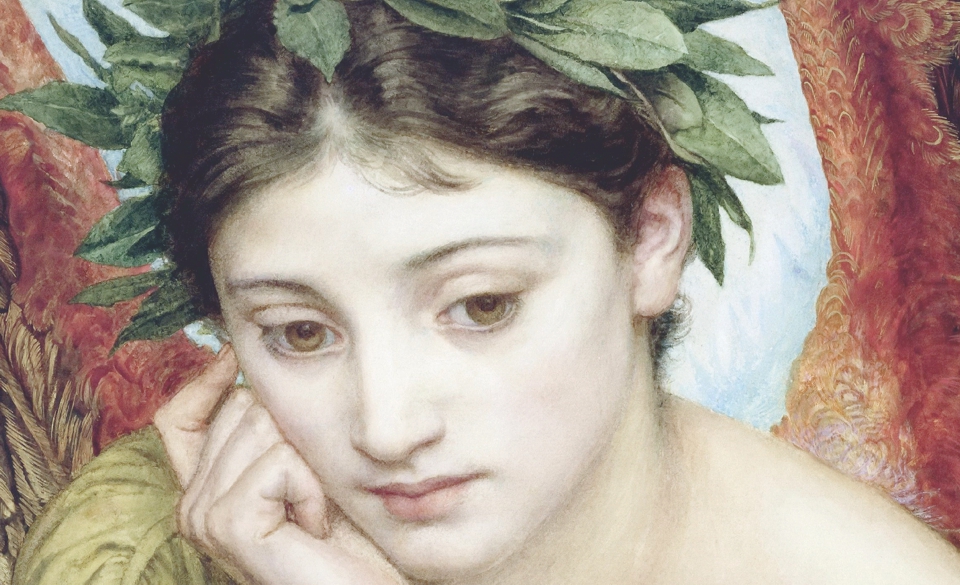
‘Erato, Muse of Poetry’ by Edward Poynter (1870, watercolour on paper, 47 x 33 cm, cropped).
About the recordings
Even though Erato was recorded in the studio, it is basically a live album without a live audience. Most tracks were done in one or two takes, by musicians playing together instead of one by one. This reduces the possibilities to edit out imperfections, so you will hear people breathing, strings rattling and the occasional glitch. More importantly, however, you will hear spontaneity and musicians responding to one another in ways that may go lost when you go for perfection. This applies in particular to the various improvisations, each of which is an absolute gem.
About the genre
The music I love most comes from a geographical area stretching from the Uygur region in Western China all the way to the Maghreb in Northern Africa, and extends well into the Balkan and Iberian peninsulas. This vast area is home to fascinating, kindred folk and art music traditions that are underpinned by a set of related modal systems: the Ottoman/Turkish Makam, Byzantine Echos, Arabic Maqām, Azeri Muğam, Persian Dastgāh, Turkmen Maqâm, the Uzbek and Tadjik Maqôm, and Uyghur Muqam. Within that ocean of beautiful music, my main interests are in Ottoman art music and folk music from the Balkans and Anatolia.
Contemporary Modal Music, coined as a cosmopolitan genre by Ross Daly, invites practitioners to draw from various modal traditions without infringement or appropriation, offering the wealth of ancient traditions on the one hand and the freedom to deviate from them on the other. This concept helped me find my musical voice and deepen my relationship with music that, for family reasons, I have loved since I was born but was not born into.
I could get very technical about modes and modality but I won’t, and will leave it at the most fundamental difference with Western music. There is no harmony in traditional modal music. Western-style second voices and chords are incompatible with the subtlety and richness of modal tonality, just as chord progression rules and aesthetics clash with its melodic progression. Hence, accompaniment will generally not go beyond a drone or the occasional bass note produced by the lower melody instruments. All musicians play the same melody, contributing with the specific sound and register of their instrument and the ornamentation possibilities it offers. Richness is achieved by heterophony. Freedom is the magic of it.
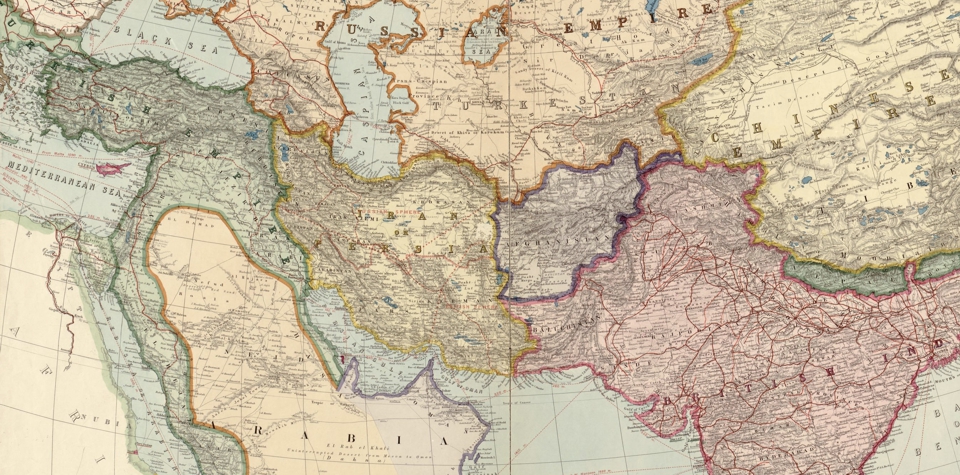
Fragment of ‘A Map of the Countries between Constantinople and Calcutta – Including Turkey in Asia, Persia, Afghanistan and Turkestan’ (1912). Edward Stanford Ltd. (Westminster, London): 1 sheet at the scale of 1 : 6,969,600 (110 miles to the inch).
Track notes
[1] Crimson / Nihâvend saz semâî
Composition: Michiel van der Meulen | Makam: Nihâvend | Usul: aksak semâî (10/8, 3-2-2-3) and sengin semâî (6/8, 3-3) | Musicians: Harris Lambrakis (ney), Giorgos Papaioannou (violin), Nikos Papaioannou (cello), Manolis Kanakakis (kanun), Taxiarchis Georgoulis (oud), Marijia Katsouna (bendir)
Nahāvand is a small city in western Iran that has been inhabited since Prehistoric times, and is known for its high-quality Persian rugs and other handicrafts. It is also the town that gave its name to the homonymous Arabic maqām and its Ottoman counterpart Nihâvend. Modulations set aside, makam Nihâvend resembles a conventional minor scale and is fairly accessible to Western ears. On Erato I use this mode as point of departure and return of a journey: through time, through space, between melancholic and optimistic, vigorous and fragile, solemn and lush, light and dark, and all the other flavours and colours offered by the modes I used. The colour of this piece, I’m sure you’ll see, is crimson.
[2] Blackcap / Albanian folk melody
Arrangement: Michiel van der Meulen | Mode: folkloristic forms of makams Gerdaniye, Muhayyer and Hüseynî | Metre: 9/8 (2-2-2-3 → 2-3-2-2) → 13/8 (2-2-2-3-2-2) → 9/8 (2-3-2-2) | Musicians: Harris Lambrakis (ney), Giorgos Papaioannou (violin), Manolis Kanakakis (kanun), Taxiarchis Georgoulis (oud), Nikos Papaioannou (cello), Michiel van der Meulen (tambura), Marijia Katsouna (bendir)
This Albanian folk melody was transcribed from a Radio Tirana broadcast by ethnomusicologist Wouter Swets (1930-2016), probably in the 1950s or 60s. Introduced by his ensemble Čalgija in the 1970s, the piece became part of the ragtag repertoire of the emerging Dutch folk music scene, under the name Albanees Radio Tirana 1 (‘Albanian Radio Tirana 1’, for lack of something better).
Even though I never managed to find an Albanian rendering, it is one of my top favourite Balkan tunes, and I decided to include a modal arrangement on this album as a tribute to the music I grew up with. It uses the same ensemble as the previous track, but the added microtonal tambura brings a completely different feel. I can only hope that I am doing right by the seemingly forgotten original.
The blackcap (Sylvia atricapilla) is a warbler also known as mock nightingale, which migrates—amongst other routes—between northwestern and southeastern Europe. The name encapsulates the beauty of the melody and its pathway through Europe’s æther.
‘Sylvia atricapilla – De Zwartkoppige Zanger’, in: Nozeman, Houttuyn, Sepp & Sepp (1829). Nederlandsche Vogelen, Vijfde deel. Sepp & Zn. (Amsterdam): 38–40.
Postscript / May 4, 2024
More than a year after release of the Erato album, I met Peter Endendijk and Annemiek den Uijl, who made a recording of Čalgija playing this melody during a radio concert on 26 December 1973, and were kind enough to share it.
Wouter Swets’ introduction offers no additional clues about the piece and its origins, except for the fact that it is a song and will have lyrics: “We shall now play a North Albanian folksong, a melody that is very characteristic of that region because of the changing time signature. Nine eighth in two forms and a thirteen eighth meter.” Nonetheless, it was the first time that I heard someone else’s rendition of the piece.
The recording is part of The Endendijk Collection, a massive collection of albums and other recordings of folk and traditional music from Western Europe to Central Asia, curated by Peter and Annemiek. Their collection was featured and acquired its name in a documentary made in 2015 by professor Dimitrije Bužarovski of the Ss. Cyril and Methodius University in Skopje, Macedonia.
Track credits
Musicians
Wouter Swets – accordion
Roel Sluis – sopranino recorder
Crispijn Oomes – violin
Remco Busink – laouto
Tjarko ten Have – def
Recording
December 26, 1973
Courtesy of the Endendijk Collection (copyright control)
[3] Kilim / Janino
Composition: Michiel van der Meulen | Makam: Uşşak | Metre: 18/16 (3-2-2-2-2-3-2-2, janino) | Musicians: Michalis Kouloumis (violin), Alexandros Papadimitrakis (oud), Michiel van der Meulen (tambura), Jacobus Thiele (adufe)
I was once asked to stage a musical intermezzo with Kairos Collective at an event organised by the research institute I work for. When our director realised that flying in six Greek musicians for that purpose would be expensive, if not decadent, he asked me if I could work with Dutch ones. I asked violinist Michalis Kouloumis, oud player Alexandros Papadimitrakis and percussionist Jacobus Thiele, who are not only based in the Netherlands, but also among the best musicians in the genre. Beyond the experience I really liked the sound of the ensemble, which I joined with a tambura. I therefore decided to invite them to join me on Erato and wrote two new pieces for this particular line-up: ‘Kilim’ and ‘Meltem’ [4]. We also recorded a new, more cranked-up version of ‘Manastırka’ [8], which first appeared on my previous album Európe.
The rhythm of ‘Kilim’ is inspired by a type of south Slavic dances in an 18/16 metre counted as 3-2-2-2-2-3-2-2 (Bulgarian jove male mome / Macedonian janino). This rhythm got to me when producing the album Unforgotten by Čalgija (Pan 2056 / TouMilou #4), which has two pieces using it. The name kilim (Middle Eastern rug) was loosely inspired by the piece’s close-knit structure and its syncopation. The album as a whole represents a more deliberate weaving effort. In order to connect the various instrumentations and styles, the tambura and the ney act as weaving threads that tie this ensemble and the previous one together.
Artisans of various cultures across the world deliberately leave flaws in their rugs, because perfection is seen as a divine prerogative. I don’t introduce imperfections in my music on purpose, but I do love non-identical repetitions. The present piece of musical tapestry has a clear example: a slightly different beginning has been woven into the repetition of the first line. If you’ll listen closely you’ll hear more examples on Erato.
[4] Meltem / Hüseynî karşılama
Composition: Michiel van der Meulen | Makam: Hüseynî | Usul: aksak (9/8, 2-2-2-3) | Musicians: Michalis Kouloumis (violin), Alexandros Papadimitrakis (oud), Michiel van der Meulen (tambura), Jacobus Thiele (daire)
‘Meltem’ combines instruments and colours from adjacent Eastern Mediterranean regions that share a past but have grown apart under the more fragmented political conditions of today. I think (but am thus far the only one) that there is also an element of rock in the improvisation section, in which the violin and tambura are the equivalents of the guitars of Jimi Hendrix and Keith Richards, respectively.
The Macedonian tambura I use is ideally suited for modal accompaniment. It has only two courses, so other than melody you can play successions of dyads (‘two-tone chords’), adding something between a hypnotic drone and simple counterpoint. I think of the instrument as a pencil, which lets you colour the music. However well suited for this purpose, the Macedonian tambura is a tempered instrument, and ‘Meltem’ needs to be played microtonally. I asked Remco Busink, who built my instrument in the 1980s, to add some frets and I think it works very well.
The second line has a modulation that gives me a feeling of spiralling downward, like a bird of prey charging in slow motion. It is a feature that was inspired by ‘Kozan’, a Cypriot dance tune I first heared on Michalis Kouloumis’ debut album Soil (2014), and which also features on Music for Shepards and Sultans (2023). I named this composition after one of Kouloumis’ ensembles as a tribute to its source of inspiration. Meltem (or Etisian) winds are hot, dry, northerly summer winds that blow across the Aegean Sea under conditions of high pressure over the Balkans and low pressure over Anatolia.
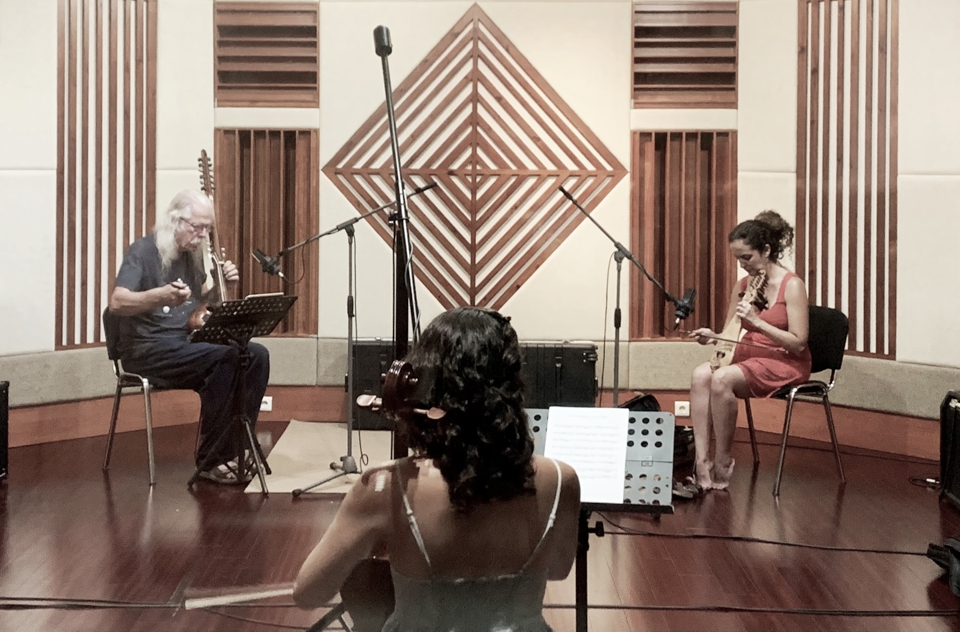
Ross Daly (tarhu), Mayu Shviro (cello) and Kelly Thoma (lyra) recording ‘Erato’ at Studio Vasmaris (Heraklion, August 27, 2021). Photo: Michiel van der Meulen.
[5] Erato / Acem-Bûselik medhal
Composition: Michiel van der Meulen | Makam: Acem-Bûselik | Usul: müsemmen (8/8, 3-2-3) | Musicians: Ross Daly (tarhu), Kelly Thoma (lyra), Mayu Shviro (cello)
When preparing this album I decided to, as we say in Dutch, put on my bold shoes and ask Ross Daly and Kelly Thoma to play one of the tracks. I was obviously very happy and honoured when they said yes, but it also felt a bit like having accidently invited a couple of three-star Michelin chefs over for dinner. What should I make them? I had a half-finished piece that was not half-bad, but it still felt a bit like serving them beer and pizza. The delays that the Erato project suffered because of the corona measures gave me time to rethink their contribution, and I eventually decided that I wanted something else. After quite some time, a couple of notes came to me that unfolded themselves in a couple of hours into the piece I was looking for: something elegant that would do honour to the many composition seminars I have done with Ross, and of course particularly suited for bowed instruments. Mayu Shviro happened to be around when we did the recording session, adding a beautiful extra layer. The session was one of those occasions that you realise something special is happening.
Muse (m/f/x)
Read ‘muse’ and you will likely think of Gala or Yoko Ono. The fact that they are both women is no coincidence: human muses are mostly female, just as the mythological ones, and those they bemuse are mostly men, in these cases Salvador Dalí and John Lennon. Explanations why this is the case tend to lean towards sterotypes. The image of a muse as a woman who encourages and enables a male artist is basically a projection of archetypal mother-son and husband-wife relationships. Mistaking the inspiration that a man experiences from a female muse for male proneness to infatuation and physical obsession with women is a belittlement of the muse, artist and art.
Only if the dynamics between artists and muses are studied beyond such stereotypes can light be shed on how creative inspiration and expression actually work*. Nature distributes artistic talent evenly over the genders. The result of nurture, however, appears to be that male artists are more likely to be enabled by women than the other way around. Think of what we are denying ourselves!
__________________
*⁾ Further reading: Tutter, A. (ed.), 2017. The Muse – Psychoanalytic Explorations of Creative Inspiration. Routledge, Abingdon-on-Thames, 280 pp., ISBN 9781138795402.
[6] Muhayyer taksim / Improvisation on the kanun
Musician: Manolis Kanakakis | Makam: Muhayyer | Metre: free time
Introduction to [7]. A giriş taksimi (Turkish: introductory improvisation) such as this one is all about creating expectations. This bears to the mode, in this case makam Muhayyer, but of course also to musicianship. There are four improvisations on Erato. In addition to the present one played by Manolis Kanakakis, Michalis Kouloumis improvises in ‘Kilim’ [3], Giorgos Papioannou before ‘Erebos’ [11] and Harris Lambrakis in ‘The Rose and the Nightingale’ [12]. Each of these improvisations is not only a demonstration of (great) musicianship, but also reflects the (great) personalities of the players. Also in that sense, music is life.
[7] Sapor / Muhayyer peşrev
Composition: Michiel van der Meulen | Makam: Muhayyer | Usul: devr-i kebîr (28/4, 6-4-4-6-4-4) | Musicians: Harris Lambrakis (ney), Giorgos Papaioannou (violin), Nikos Papaioannou (cello), Manolis Kanakakis (kanun), Taxiarchis Georgoulis (oud), Marijia Katsouna (bendir)
I once had dinner with a professor in cognitive science and two fellow geologists. For some non-obvious reason, the subject of synaesthesia came up. We first discussed it in general terms, and then one of my colleagues mentioned that he perceives days of the week as intrinsically coloured. My version of this condition is that music sometimes has flavour. I smell warm transitors when I hear my first album or, strangely enough, ‘Can’t get enough’ by British rock band Bad Company. The higher register of makam Muhayyer gives me an indeterminate metallic taste in the back of my mouth, which I first noticed when working on this very peşrev – hence the title. The professor was baffled: “Extraordinary! Synaesthesia is very rare, and I am having dinner with two cases.”
There is another fond memory associated with ‘Sapor’. After giving the then brand-new piece a first try, fellow modal composition student Savvas Koudounas commented, with a big smile: “it is so joyful!” I was touched. In my home country the mood of this type of music is usually put somewhere between melancholic and straight-out sad, even when it is quite the opposite. To me, Muhayyer is like the happines that the panoramic view from a mountain you just climbed will give you.
[8] Manastırka / Poustséno / Pušteno
Composition: Michiel van der Meulen | Modes: folkloristic forms of makams Hüseynî, Hicaz and Kürdî | Metre: 16/16 (2-2-2-3-2-2-3, poustséno/pušteno) | Musicians: Michalis Kouloumis (violin), Harris Lambrakis (ney), Alexandros Papadimitrakis (oud), Michiel van der Meulen (tambura), Jacobus Thiele (bendir)
This is the second recording of a piece that also features on my previous album Európe. A comparison between the rather different renditions reveals something I find important in music: I want my melodies to be able to stand on their own. They are not instrument-specific, and they don’t serve to showcase my or anyone else’s technical abilities.
I am technically the composer, but the word composition (‘putting together’) only makes real sense to me in the context of western classical music, in which pieces are actually assembled, melodies stacked on top of melodies, resulting in scores resembling battle plans for sizeable armies, instructing each musician to deliver a component of something that cannot be delivered by an individual one. The scores to this album are extremely simple by comparison. There is just the melody, which I like to see as a person who happens to pay me a visit, my job being to make the most of the occasion by listening well and passing on what I heard.
If you accept listening to a visitor as my analogy for composition and extend that to making an album, you’ll understand me when I consider myself host rather than producer. I introduce the musicians to the pieces, let them have their own dialogues, make sure everything turns out more or less as I had in mind without bothering too much about the details. They know where the music comes from, and I like surprises.
Original track notes
(Európe / Contemporary Modal Music / Kairos Collective / TouMilou #3, 2019)
“This piece is inspired by a melody I once transcribed from memory, one that I think I learned from my father, who neither remembers who taught him, nor where the song is from, nor what it is called. Based on the type of melody and rhythm we agreed it must be Macedonian. It might very well be that the song as we used to play it does not actually exist: in criminological terms the chain of evidence is hopelessly compromised, and I must admit that I never found a melody sounding much like it. Pedigree set aside I really like its metre, which belongs to a family of dances that exists in the Macedonian region, and is referred to as pušteno (пуштено) in North Macedonia and poustséno (πουστσένο), pousténo (πουστένο) or levendikos (λεβέντικος) in Northern Greece.
[…] The definition of Macedonia, by the way, is a rather touchy subject that is best left alone by non-natives of the states involved. ‘Manastırka’ refers to a city and region that has been inhabited for centuries by Slavs who call it Bitola (Битола), Albanians who call it Manastir, Aromanians/Vlachs who call it Bitolia, Greeks who call it Monastiri (Μοναστήρι), all of whom ruled by Ottoman Turks who called it Manastır. Between 1864 and 1912, Manastır was the capital of the homonymous vilayet, a first-level administrative division of the Ottoman empire. The basis of that division was geographic rather than ethnic, because Europe’s current exclusive relationships between peoples and countries has only existed since the empires fell and nation states were established. The Ottomans were rulers of territory and its inhabitants regardless of their ethnicity, not of peoples and their countries. Anyway, ‘Manastırka’ refers to a region where at least the metre must be somewhat familiar. For those who are unsatisfied with this etymology, the name could however also refer to Šljivovica Manastirka (Шљивовица Манастирка), an internationally famous Serbian brand of Slivovitz having 45% of a substance that has a great and proven potential to unite us all.”
[9] Phoenix / Kürdî devr-i hindî
Composition: Michiel van der Meulen | Makam: Kürdî | Usul: devr-i hindî (7/8, 3-2-2) | Musicians: Taxiarchis Georgoulis (oud) and Vagelis Karipis (riq, bendir), joined in the finale by Harris Lambrakis (ney), Giorgos Papaioannou (violin), Manolis Kanakakis (kanun) and Nikos Papaioannou (cello)
I wrote this piece just before doing an oud seminar with Taxiarchis Georgoulis. When he first heard me trying it, he declared: “this piece is for solo oud”, to which I replied: “then you’ll have to record it some day.” Much later I was texting Taxiarchis, asking him how he was doing during the corona crisis, which has obviously been particularly difficult for performing artists. He said he was well, but bored. I then proposed that he record ‘Phoenix’ as sort of a lockdown antidote. So he did, together with the well-known percussionist Vagelis Karipis.
I once saw a rather surprising documentary about childbirth in Russia, which the prospective fathers for some reason are not allowed to attend. They have to wait outside the hospital, hoping that somebody will shout some basic information about the delivery and wellbeing of mother and child out of a window. On the recording day, I felt exactly the same. In fact, I was worse off, as there was no window for me to stand by, and the studio had poor internet signal. Thankfully it turned out well.
Taxiarchis was right: this piece works well on the oud, but it also has an element of lushness that is better expressed by a larger group. I decided, perhaps characteristically so, to have both the devil and the deep blue sea, and added an orchestral finale.
A phoenix biting a branch, and below, burning. The Latin text explains that when this mythical bird felt that it was growing old, it would make its own funeral pyre, allow itself to be consumed by fire, and rise again from the ashes. Anonymous English illuminated manuscript, 13th century. British Library, Catalogue of illuminated manucripts, Harvey 4751.
[10] Şivenüma taksim / Improvisation on the violin
Musician: Giorgos Papaioannou | Makam: Şivenüma | Metre: free time
Introduction to [11]. As a geology student, I once needed to see a physician in the Tzoumerka mountain region in northwestern Greece, where I was doing fieldwork. The waiting room was filled with elderly, in fact rather healthy-looking villagers who were having a good time chatting. They asked me what the problem was, and even though it was a bit difficult for me to explain (I hardly spoke a word of Greek at that time), everybody agreed that I should go first. Inside the doctor’s office, an elderly lady was just buttoning up. She decided to stay for the duration of my consultation, which resulted in me getting an injection and a prescription for some pills. Recording taksims with Kairos Collective always reminds me of this experience: the good-naturedness in the ‘waiting room’ and the way it is decided who goes next are exactly the same.
[11] Erebos / Şivenüma peşrev
Composition: Michiel van der Meulen | Makam: Şivenüma | Usul: devr-i kebîr (28/4, 6-4-4-6-4-4) | Musicians: Harris Lambrakis (ney), Giorgos Papaioannou (violin), Nikos Papaioannou (cello), Manolis Kanakakis (kanun), Taxiarchis Georgoulis (oud), Marijia Katsouna (bendir)
Erebos, one of the primordial Greek deities, personifies darkness and the underworld. He is son of Chaos, the primeval void, and consort of Nyx, goddess of the night. They jointly represent the darkness from which the lighter and brighter features of life would eventually originate. ‘Erebos’ fits the main modal characteristics and general moodiness of this piece. Şivenüma is a compound makam that starts with Sabâ, a rather dark mode, and makes its conclusion in makam Sultâni-Yegâh, which adds a majestic touch to the darkness.
When discussing the atmosphere of the piece, the musicians came up with the Greek word αυτοκρατορικό (avtokratorikó), which means imperial. It puts more emphasis on power than the more or less equivalent Dutch word koninklijk, which literally translates as royal but in this context means dignified. However, I somehow like the Greek word, which in my mind will forever be connected with this composition and its recording.
[12] The Rose and the Nightingale / Phrygian phantasy
Composition: Michiel van der Meulen | Mode: Phrygian | Usul: sengin semâî (6/8, 3-3) and yürük semâî (same metre, faster) | Musicians: Harris Lambrakis (ney), Giorgos Papaioannou (violin), Nikos Papaioannou (cello), Manolis Kanakakis (kanun), Taxiarchis Georgoulis (oud), Marijia Katsouna (tombak)
The rose and the nightingale (gül ve bülbül in Turkish; gul-u-bul-bul in Persian) are important metaphors in Eastern poetry. The nightingale can be considered a counterpart of Shakespeare’s Romeo. He will suffer and neglect himself for the love of the rose, which some poets described as the blood springing from his wounded heart. The rose stands for unattainable love, as symbolised especially by her thorns, which may however also offer the nightingale protection against his mortal enemy, the snake. The rose wouldn’t be as famous as a symbol of love if it weren’t for the nightingale’s songs about her. The piece has a contemplative first part and stronger second, which could represent a fragrant rose and an anguished nightingale, respectively. Conversely, they could also stand for the nightingale singing and the rose stinging – it is up to you to decide which is what. What matters is the contrast between the parts, the shared theme, and the peaceful ending.
On that last note, during the abovementioned seminar that inspired the Erato album, we listened to a 40-minute recording of a Mevlevi ritual. The chanting cycle started solemnly, built up towards a growling, pulsating zenith, and then returned back to solemnity. It was hypnotic, impressive and beautiful, and made me realise something important: such age-old ritual is designed to take you into trance…and back again. That last important bit is something we often forget in the West, for example at rock concerts that build up towards this huge final drum roll and a massive instrumental-pyrotechnic big bang, after which the singer shouts “OK, this was it folks, hope you enjoyed the show!”, sending the worked-up audience off to maraud the streets.
‘Gül ve Bülbül’ by Ottoman court painter Abdullah Buhari (1700s).
I recall performing with a blues band in the auditorium of the Wolvenplein Penitentiary in the city of Utrecht, a 19th-century prison complex that is as scenic as it is imposing. When we played our last encore, the most upbeat song on the set list, the inmates jumped from their seats and started dancing wildly. The guards’ faces told me that they feared losing control. After the set we were rushed to safer grounds while the prison staff tried to escort our audience back to their cells; windows were getting smashed and the fire alarm was sounding. Nonetheless, everybody considered the concert a great success, even the guards. “Much better than last year!”, they said, telling us that the previous band had annoyed the inmates by being visibly afraid of them – apparently rowdiness is easier to handle than disappointment. I now think that we should have done what dervishes do: give the inmates the exhilaration they clearly needed, but also an appropriate state of mind to allow them to get back to where they came from. I don’t know whether this particular audience would have appreciated anything involving roses and nightingales, though.
[13] Romanza / Acem Aşîrân saz semâî
Composition: Michiel van der Meulen | Makam: Acem Aşîrân | Usul: aksak semâî (10/8, 3-2-2-3) and sengin semâî (6/8, 3-3) | Musicians: Harris Lambrakis (ney), Giorgos Papaioannou (violin), Nikos Papaioannou (cello), Manolis Kanakakis (kanun), Taxiarchis Georgoulis (oud), Marijia Katsouna (bendir)
This saz semâî was first performed in 2017 at the Palace of the Grand Master of the Knights of Rhodes by Mitos orchestra (shown below). Imagine a man, sitting in the courtyard of this hugely impressive castle, amidst a large audience, holding hands with the woman he loved for thirty years, listening to a piece that was inspired by exactly that, played perfectly by fantastic musicians. That man, experiencing that moment, was excessively happy.
The arrangement you hear in the recording was inspired by the one that musician and composer Evgenios Voulgaris made for that occasion. He had joined the rehearsals in Rhodes a bit later due to a prior engagement. «Όχι τόσο Βαγκνερικό!» (“less Wagnerian, please!”), was his first comment after hearing what we had made of ‘Romanza’. He then started to make some subtle but much-needed changes to the interpretation, for which purpose he wanted to know more about the intentions I had with the piece. My approach is usually quite intuitive, so it was enlightening for me to have to put my intentions into words, discuss them and see them getting translated into instrumentation and phrasing. A couple of days later, after the concert, I told Evgenios how much I liked his orchestration and that would like to record ‘Romanza’ in the studio with a similarly large group. He replied: “you don’t need a big group to get a big sound.” Spot on again, as demonstrated by Ross Daly, Kelly Thoma and Mayu Shviru on this very album.
The melody of the fourth section, which starts at 04:20, came to me when we were called back into the classroom during a composition seminar. While my fellow students were re-entering, I composed the section in less time than it takes to play it and never changed a note. Fascinating: tempo is crucial to the experience of music, but apparently less so to its imagination.
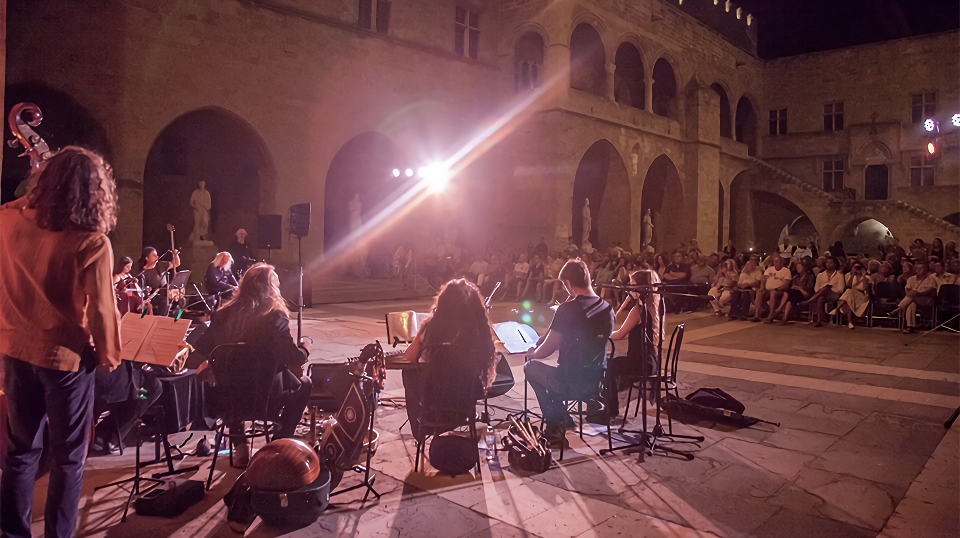
Labyrinth’s Mitos Orchestra performing in Rhodes (September 3, 2017). Musicians, from left to right, front: Michael Harrist (double bass), Efrén López (hurdy-gurdy), Eleftheria Daoultzi (kanun), Nikos Paraoulakis (ney), Meira Segal (ney) / back: Chrysanthi Gkika (kemençe), Evgenios Voulgaris (yaylı tambur) and Ross Daly (tarhu). Photo: © 2017 Petros Keleperas.
[14] Aj Sarajevo / Nihâvend yürük semâî / Bojerka
Composition: Michiel van der Meulen | Makam: Nihâvend | Usul: yürük semâî / bojerka (6/8, 3-3) | Musicians: Jan Wollring (accordion), Michiel van der Meulen (double bass), Jacobus Thiele (drums)
In the summer of 2010, my wife Martine and I stayed in Sarajevo for a couple of days on our way to Greece, together with our children Tom and Veerle. That war-torn beauty of a city, which we entered through the infamous sniper alley known from chaotic 1990s news footage, cannot be but thought-provoking. On the first evening we were having tea in a secluded square that could well have been located somewhere in the Old City of İstanbul. The children, who were ten and eight years of age at that time, respectively, were playing about while my wife and I were talking. The atmosphere was peaceful; everybody was having a good time. At some point Veerle came and asked for my camera. After a couple of minutes she returned it and ran off again. Martine and I were curious, checked the camera and saw that Veerle had made a single photograph of a particularly bullet-ridden blind wall. When we left for our hotel she showed us the place, just around the corner, which made for a rather grim contrast with the cosy square.
The children had occasionally been asking questions about the ubiquitous war damage in Bosnia-Herzegovina; I remember Tom muttering “they must have been very angry” when we drove by a bus shelter resembling a rusty colander. We gave them watered-down accounts of what happened during the Bosnian war, but the damage speaks for itself and the photo and the odd remark told us what an impression it was making on them. Ugly traces of a nasty war, just two days drive from their home, where they had always been taking safety for granted. The world had become uncomfortably small.
Another touching memory I have of our stay in Sarajevo is of the children singing along with the imam of a nearby mosque while playing in our hotel apartment, rather early in the morning. “Are you enjoying the music?”, I asked them. “The man sings well”, Tom solemnly declared. This was the first of several adhans we would be hearing on our way south, and Tom would compare each imam with the one in Sarajevo, the first he ever heard.
In that city, under those circumstances, I wrote ‘Aj Sarajevo’. I think of this piece as a chameleon: it can be Western, Eastern, or both at the same time. I have played it with a modal ensemble, which works well, but I decided to record it with accordion, double bass and drums. When accordionist Jan Wollring and percussionist Jacobus Thiele asked me what I was looking for, I sent them a song by Šaban Bajramović and Mostar Sevdah Reunion and asked them to think of a piece like that, played in a quiet club, very late in the evening just before closing time, for the last members of a small audience, drinking and smoking in silent contemplation. I think they delivered. When we were mixing the piece I told sound engineer Vangelis Apostolou that I wanted the rhythm section to whisper. I think he delivered too.
This piece brings this album to a conclusion. Erato began and ended in the same mode, or mood if you like. Nihâvend is quintessentially Eastern, but it is at the same time perhaps the most accessible makam to Western ears. I am leaving you in the middle.

‘War Sarajevo’, photo by frabri, reproduced under a 123RF Ltd Standard License.


